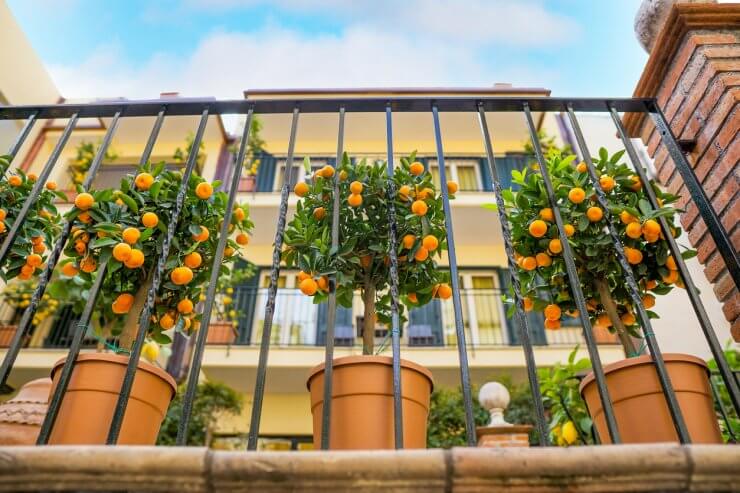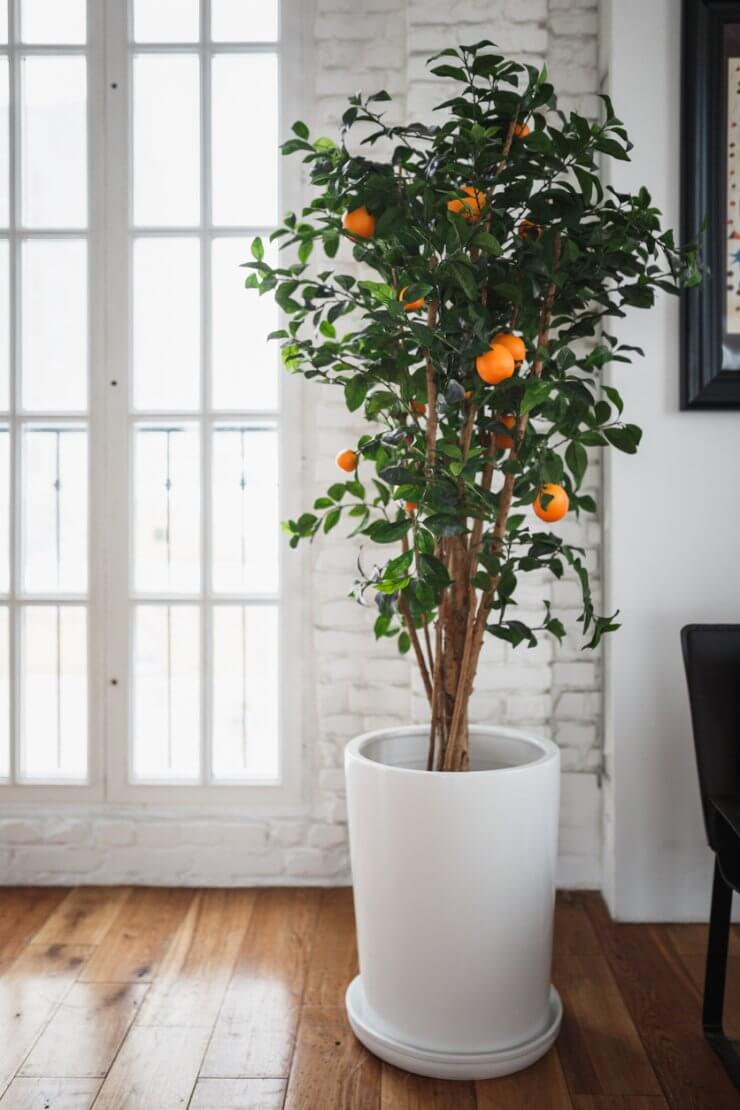
Orange trees growing in pots on a balcony
Orange trees grow well in containers. Just make sure your soil is clean, weed-free, and nutrient-rich. And make sure your containers have good drainage; soggy soil can lead to root rot, which can spell disaster for your orange trees.
Light
Orange trees need at least eight hours of sunlight each day to flourish. Pick a sunny spot with a southern exposure and as little wind as possible. If you have your container on wheels, it will be easier to reposition your tree when you need to.
If you’re growing your tree indoors, keep it by a window that faces south or southwest. You want direct light, not indirect light. When winter comes, you may need to supplement the sun with a grow light.
If you live in a temperate zone with warm summers and cold winters, your orange trees can spend spring, summer, and probably part of fall outside. Just don’t leave them outside if there’s a chance of temperatures dropping below freezing. You’ll want to phase them into indoor living over the course of a month to avoid shocking their system. See Winterizing Your Orange Trees for details.
Water
When it comes to watering your container orange tree, consistency is key. You want to hit that Goldilocks zone: not too much, not too little. Since exactly how much water is enough is going to vary from tree to tree (and maybe even container to container, depending on the type of soil you have), you could use a moisture meter to make sure your tree is getting enough—but not too much—water. If your moisture meter reads about 50% when you check the root moisture, it’s definitely time to water.
In the winter time, when humidity is lower, you may need to provide a little extra moisture for the air. If you put the container on top of a layer of pebbles or marbles, you can add water to that layer. You’ll be providing extra moisture for the air and improving airflow for the plant. You can also mist the tree’s leaves with a spray bottle; that will provide humidity and get any accumulated dust off the leaves as well.
Soil

Orange tree growing indoors in a container
For orange trees in containers or planters, use a commercial soil mix that’s formulated for citrus trees. This gives your trees a healthy head start, and you’re less likely to introduce weeds or soilborne diseases by digging up soil from your garden.
Only fertilize your tree when it’s actively growing, usually spring through summer. Choose a slow-release granular fertilizer made especially for citrus plants. If there are no specific instructions for container-grown trees, mix the fertilizer at half the recommended strength.
Pruning
Even dwarf variety orange trees can grow to a sizeable height. To keep your container-grown tree at a manageable size, you’ll want to prune it regularly. Cut new shoots back to about half their length, cutting just above a leaf. Assess the inside branches of your tree. If it’s getting dense in the middle, prune some of those inner branches back; this will improve airflow and will let more sun get to the middle of your tree. Remove dead wood on a regular basis.
Have you grown orange trees in containers? Do you put them outside for part of the year, or grow them indoors year-round? Please tell us about your successes and challenges growing orange trees in containers.


 Previous
Previous


our tree had a lot of buds that turned into what appears to be small fruit clumped together. Should some of them be pruned to let the others grow bigger?